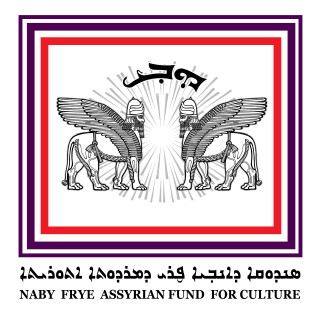 ©
©
Naby Frye
Assyrian Fund for Culture
| |
| Home |
| Exhibits |
| Board of Directors |
| Grant History |
| Other Activities |
| Grant Submissions |
| Donate |
| Email Us |
Naby Frye Assyrian Fund for Culture
15 Tower Hill Road
Brimfield, MA 01010
info@nabyfryeculturefund.org
501(c)(3) organization
| NFAFC Logo |
The logo adopted for NFAFC consists of three elements: ‡ Lamassu complex with the sun/star ‡ Lamassu, “protective spirit,” is the Akkadian name for the human-headed winged bull. These figures range from monumental eighteen foot, three dimensional, sculpted stones, made famous through Assyrian palace entries at Kalhu and other sites, to etchings on clay tablets buried under house entrances. At palaces, a single lamassu was fixed on either side of the gate, a practice copied by the Achaemenids at Persepolis. Among the largest museum lamassus from Assyrian sites in Mesopotamia are ones at the Louvre and at the Oriental Institute in Chicago. The logo lamassus on this site face each other with a stylized Assyrian star in the center. This symbol comes from the cover of the presentation documents prepared for the League of Nations beginning in 1924 by the Malik Kambar of Jilu (1888-1969) delegation. Alexander Gabriel (1900-1974) of Urmia, Malik Kambar’s adjutant , probably made the composition. ‡ The Syriac-based letters above the Lamassu are the Aramaic letters “yud” and “heh” representing Yahweh, God, whose name was sacred. The four dots are cruciform in their arrangement and represent the three natures of the Holy Trinity as forming the one almighty Godhead (i.e. three in one, and one in three). This symbol has been used in Syriac manuscripts for centuries. ‡ The border colors reflect an early 20th century Assyrian flag whose colors were purple, white and red. When the international Assyrian flag was adopted in 1974, the color blue was substituted for the purple in a new flag designed by George Bit Atanous.
|
|
||